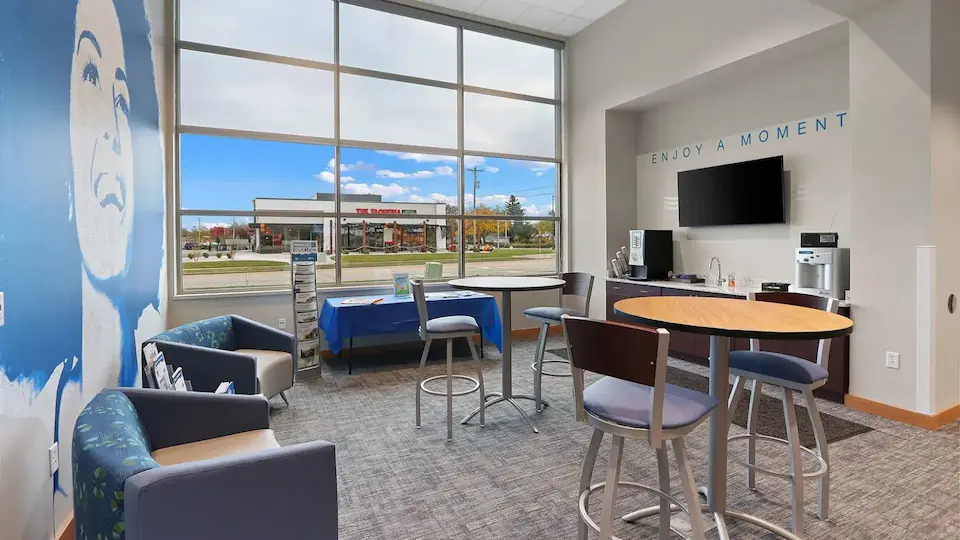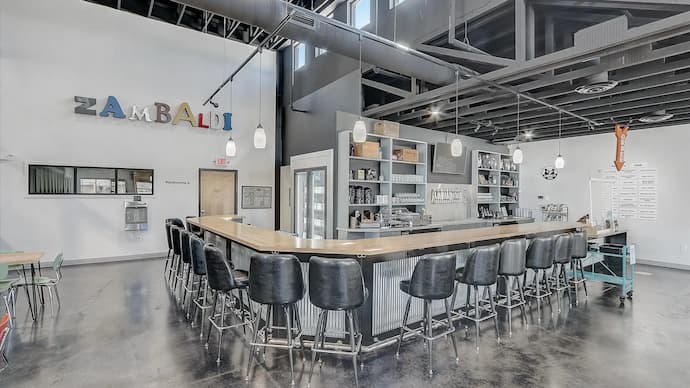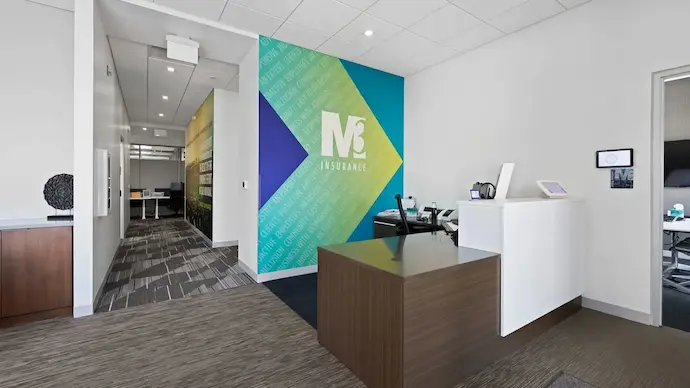July 28, 2025
Your space communicates who you are as a business. Long before a conversation starts, your clients are noticing the details– how it feels to walk in, how it’s organized, what it says about your standards.
For client-facing businesses, the physical environment is part of the brand. It should feel purposeful, consistent, and aligned with the experience you want to deliver. A renovation is an opportunity to bring that to life through design.
Why Your Space Should Reflect Your Brand

Branding through design is a proven strategy for creating trust, encouraging loyalty, and making your business memorable. Every design decision contributes to the customer experience and helps communicate what your business stands for. This includes the choices you make about furniture, finishes, and layout.
The Role of Interior Design in Customer Perception
Customers pick up on visual and sensory cues. Sleek lines and glass walls may suggest innovation and transparency. Natural wood and soft lighting may evoke warmth and connection. If your interior feels cluttered or outdated, it can send the wrong message, even if your services are top-notch.
Thoughtful interior design can:
-
Reinforce your brand identity without saying a word
-
Support the kind of atmosphere you want to create (professional, welcoming, bold, calming)
-
Help clients feel more confident in their decision to work with you
Brand Consistency Across Locations
If your business has multiple locations, consistent design matters. A repeat customer should feel the same sense of familiarity whether they are in your flagship location or a satellite office. This does not mean every space needs to be identical, but key elements, like branded colors, signature materials, and layout logic, should carry through.
Consistency builds brand recognition. It also shows attention to detail, which clients appreciate in any industry. Consider the stores you know, love, and visit regularly. Most locations have a consistent theme, layout, and customer experience.
Design Elements That Communicate Your Brand

You don’t need to do a full gut renovation to bring your brand into your space. Small, intentional changes can have a big impact. Focus on design elements that make your identity visible and tangible.
Custom Millwork and Signage
Custom carpentry can turn a blank wall into a brand moment. Built-in shelving, feature walls, reception desks, and product displays can all reflect your aesthetic. Pair this with branded signage, either bold or subtle depending on your style, and your space starts to tell your story.
Great signage should be easy to read, well-lit, and placed strategically. It can include your logo, brand values, tagline, or even a custom pattern that echoes your visual identity. It’s all about subtly reminding customers and visitors who you are and what your brand represents.
Branded Color Schemes and Materials
Color is one of the most powerful tools in commercial interior branding. Use your existing brand palette to guide paint, upholstery, tile, and accent choices. A little goes a long way, and subtle nods are often more elegant than over-saturation.
Material choices also matter. Are you a modern tech firm? Consider concrete, steel, and matte finishes. A boutique wellness brand? Lean into wood, linen, and soft textures. Choose materials that align with the feeling you want to create. Don’t be afraid to consult a professional if you’re unsure how to curate materials that match your brand’s aesthetic.
Strategic Layout and Flow
Your space should support how clients interact with your business. Do they need a place to wait? Somewhere to browse? A private room for consultations? Design the flow of your space to guide people naturally from one step to the next.
This is where commercial interior branding meets practical design. The right layout reinforces your brand values while making the space easier and more enjoyable to use. It’s a special balance that interior design experts love to strike.
Tips for Working with a Design-Build Team

Partnering with a design-build firm makes the renovation process smoother and more cohesive. When your designers and builders are on the same team, communication improves and ideas come to life faster.
Translating Brand into Built Environment
Start by sharing your full brand identity: logos, colors, fonts, photography, mission statement, and customer personas. This gives your design team a solid foundation for decision-making. Do not worry if you do not have all the pieces. Most firms can help you clarify your visual language as part of the process.
Ask your team to create mood boards or concept sketches early in the process. These help everyone visualize how your brand will show up in the space, before major decisions are made.
Staying On Budget While Making an Impact
You can create a strong brand presence without overspending. Prioritize high-impact areas like the entryway, reception desk, or client meeting spaces. These are the places where first impressions happen.
Other cost-saving tips:
-
Repurpose existing furniture with updated finishes
-
Use lighting strategically to create mood without major electrical work
-
Invest in one or two custom features rather than trying to brand every surface
A well-designed space supports your brand in real, practical ways. It shapes how people experience your business, builds trust, and reinforces the message you want to send. When your renovation reflects your brand, it becomes part of how your business communicates and connects.
At DeLeers, we build spaces that are tailored to your vision, your values, and the way you work. Reach out to start planning a space that represents your brand.
Message or call our experts at 920-347-5830 with any questions about hiring professionals to start renovating your commercial space!



